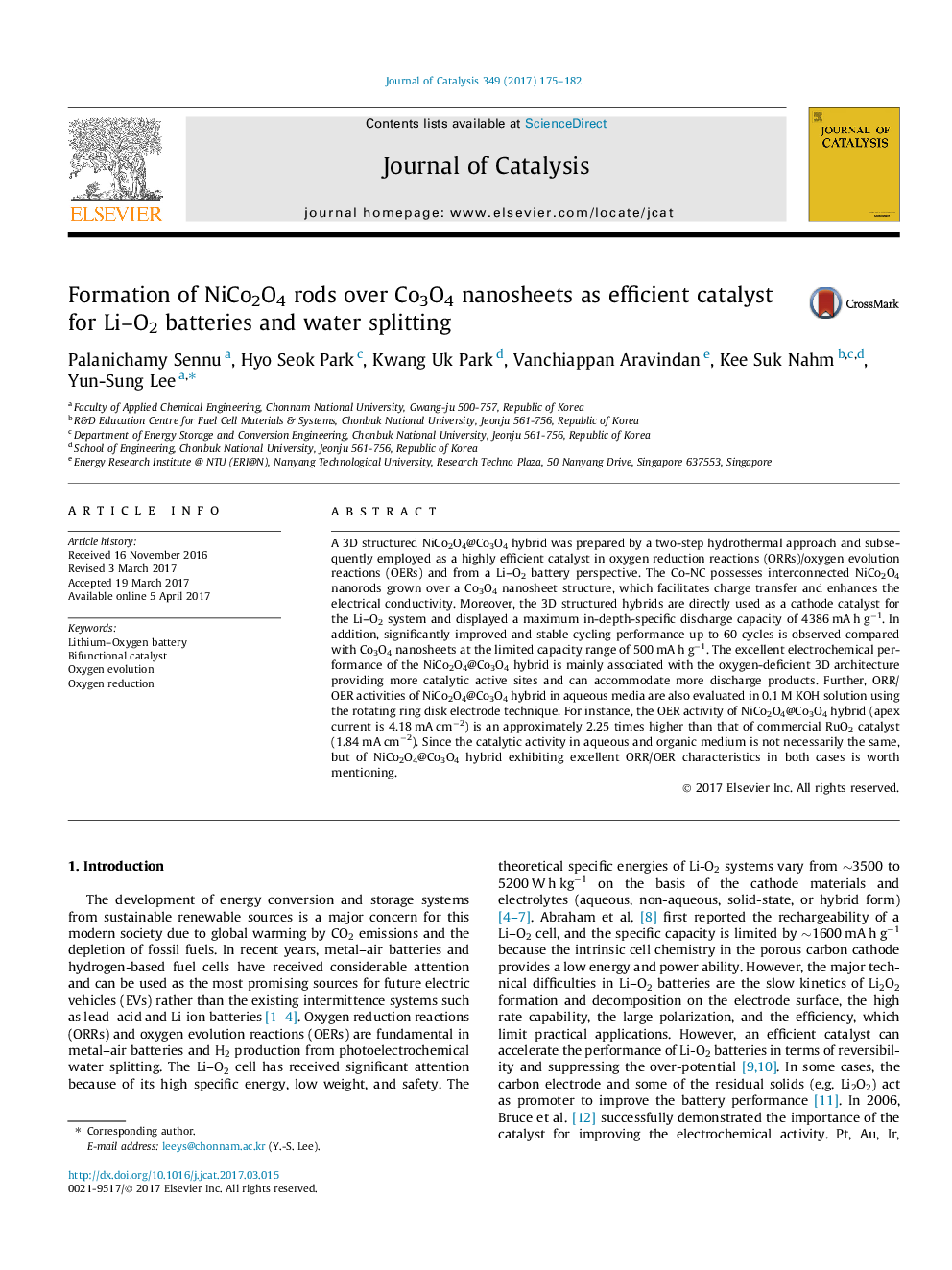| Article ID | Journal | Published Year | Pages | File Type |
|---|---|---|---|---|
| 4757534 | Journal of Catalysis | 2017 | 8 Pages |
â¢3D structured NiCo2O4@Co3O4 hybrid is prepared as catalyst for Li-O2 battery.â¢Excellent ORR/OER activity is observed in both aqueous and organic media.â¢Li-O2 system displayed a maximum in-depth-specific discharge capacity of 4386 mA h gâ1.
A 3D structured NiCo2O4@Co3O4 hybrid was prepared by a two-step hydrothermal approach and subsequently employed as a highly efficient catalyst in oxygen reduction reactions (ORRs)/oxygen evolution reactions (OERs) and from a Li-O2 battery perspective. The Co-NC possesses interconnected NiCo2O4 nanorods grown over a Co3O4 nanosheet structure, which facilitates charge transfer and enhances the electrical conductivity. Moreover, the 3D structured hybrids are directly used as a cathode catalyst for the Li-O2 system and displayed a maximum in-depth-specific discharge capacity of 4386 mA h gâ1. In addition, significantly improved and stable cycling performance up to 60 cycles is observed compared with Co3O4 nanosheets at the limited capacity range of 500 mA h gâ1. The excellent electrochemical performance of the NiCo2O4@Co3O4 hybrid is mainly associated with the oxygen-deficient 3D architecture providing more catalytic active sites and can accommodate more discharge products. Further, ORR/OER activities of NiCo2O4@Co3O4 hybrid in aqueous media are also evaluated in 0.1 M KOH solution using the rotating ring disk electrode technique. For instance, the OER activity of NiCo2O4@Co3O4 hybrid (apex current is 4.18 mA cmâ2) is an approximately 2.25 times higher than that of commercial RuO2 catalyst (1.84 mA cmâ2). Since the catalytic activity in aqueous and organic medium is not necessarily the same, but of NiCo2O4@Co3O4 hybrid exhibiting excellent ORR/OER characteristics in both cases is worth mentioning.
Graphical abstractDownload high-res image (158KB)Download full-size image
